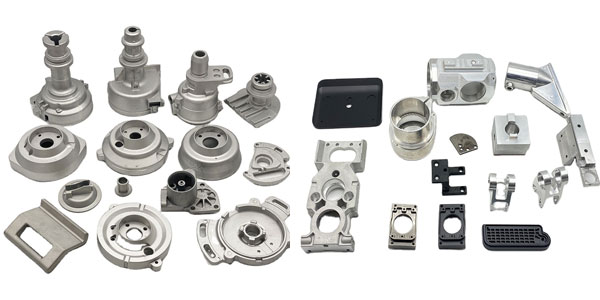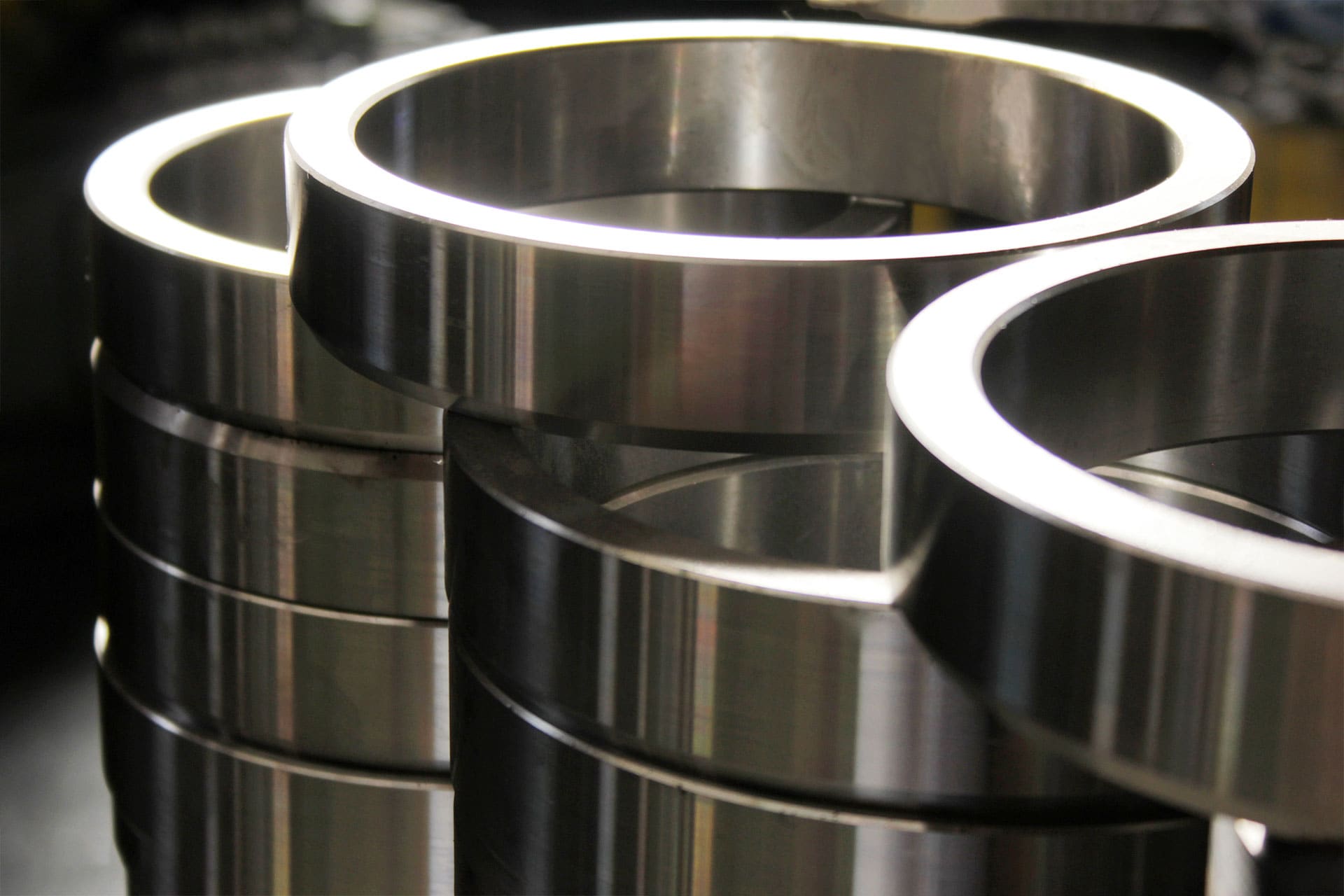Why Metal Castings remain vital in modern production
Wiki Article
Everything About Light Weight Aluminum Castings: Comprehending Their Role and Relevance in Manufacturing
Light weight aluminum spreadings are essential to modern manufacturing, offering a blend of lightweight buildings and sturdiness. They facilitate complicated designs while reducing setting up costs. Industries such as auto and aerospace frequently use these elements for improved efficiency. Nonetheless, the manufacturing of aluminum spreadings is not without its challenges. Understanding the subtleties of this process discloses both the advantages and possible pitfalls. Checking out these factors will supply deeper understandings right into their expanding value.Summary of Light Weight Aluminum Spreading Processes
Light weight aluminum casting processes play an essential function in manufacturing, providing versatility and efficiency. These processes involve putting molten light weight aluminum right into mold and mildews to produce exact shapes and elements. Various strategies are used, consisting of sand spreading, pass away casting, and investment spreading, each identified by its method of mold production and the intended application.Sand casting uses a mix of sand and binder to develop molds, permitting intricate geometries. Die casting, on the other hand, includes forcing molten aluminum into metal mold and mildews, resulting in high precision and smooth surfaces. Investment spreading, frequently made use of for intricate designs, involves producing a wax pattern coated with a ceramic shell, which is then full of molten aluminum.
These casting methods satisfy varied industrial demands, making aluminum a recommended product for parts in markets such as vehicle, aerospace, and customer items. The selection of casting strategy greatly influences the end product's top quality and performance.
Benefits of Utilizing Aluminum Castings
The advantages of utilizing aluminum castings in production are countless and significant. To start with, light weight aluminum's lightweight nature contributes to decreased overall product weight, boosting energy efficiency in applications such as automobile and aerospace industries. In addition, light weight aluminum castings exhibit superb rust resistance, guaranteeing longevity and sturdiness in extreme atmospheres. The product's electrical and thermal conductivity additionally makes it suitable for numerous applications, consisting of electronics and warm exchangers.On top of that, aluminum castings can be generated with complex designs, permitting extra intricate shapes that satisfy details functional requirements. This versatility adds to decreased assembly prices and enhanced layout adaptability. The casting procedure itself is effective, enabling for high-volume production with consistent top quality. Aluminum is recyclable, making it an eco pleasant option in production. Collectively, these benefits highlight why light weight aluminum castings are progressively preferred throughout varied markets, offering both performance benefits and financial effectiveness.
Typical Applications of Light Weight Aluminum Castings
While various materials are made use of in manufacturing, aluminum castings stand out because of their wide variety of applications throughout numerous sectors. These spreadings are extensively made use of in the automobile sector for engine components, transmission housings, and structural parts, adding to lighter lorries and boosted gas efficiency. In the aerospace market, aluminum spreadings are vital for airplane elements, where weight reduction is necessary for efficiency and security.Additionally, the electrical industry employs light weight aluminum spreadings for real estates and architectural aspects in equipment, profiting from the product's outstanding conductivity. In consumer items, aluminum spreadings can be located in products such as home appliances and sporting tools, providing resilience and a contemporary aesthetic. Furthermore, the building industry makes use of aluminum spreadings in architectural components, window frameworks, and fixtures, showcasing their versatility and stamina. Overall, light weight aluminum castings play an important role in boosting product performance and performance across various industries.
Key Production Techniques for Light Weight Aluminum Castings
The production of aluminum spreadings counts on various methods, with sand casting and die spreading being among one of the most popular. Sand spreading entails producing mold and mildews from sand, enabling for detailed designs and big parts. On the other hand, die casting makes use of high-pressure injection of molten light weight aluminum right into recyclable mold and mildews, using precision and performance for automation.Sand Spreading Process
Sand casting stands as one of one of the most extensively utilized techniques for producing light weight aluminum spreadings, many thanks to its convenience and cost-effectiveness. This procedure includes creating a mold from a combination of sand and a bonding agent, typically clay. When the mold and mildew is ready, molten aluminum is poured right into it, permitting the metal to fill the dental caries. After cooling down, the mold and mildew is broken away to expose the spreading. Sand spreading accommodates big components and complicated geometries, making it appropriate for various applications. In addition, it permits for very easy alterations, allowing suppliers to adjust styles quickly. However, the surface finish may call for added machining for precise applications, ensuring the final product meets quality criteria.Die Spreading Methods
Pass away spreading represents a very reliable technique for creating light weight aluminum spreadings, defined by its ability to deliver high accuracy and superb surface finish. This technique primarily involves requiring liquified light weight aluminum into a mold under high pressure, making certain that great details and intricate forms are caught precisely. There are 2 primary die casting approaches: warm chamber and cool chamber. Warm chamber die spreading is ideal for alloys with low melting points and enables read for faster cycles, while cold chamber pass away casting is optimal for high-temperature alloys, requiring different melting systems. Both techniques boost production rates and lower material waste, making pass away casting a preferred choice in sectors such as vehicle and electronic devices, where durability and dimensional precision are extremely important.Sustainability in Light Weight Aluminum Casting Manufacturing
While the need for aluminum spreadings remains to grow, manufacturers are significantly prioritizing sustainability in their manufacturing procedures. This change is driven by the need to minimize ecological effect and preserve natural deposits. Numerous companies are embracing recycling efforts, using scrap aluminum, which significantly lowers energy usage and greenhouse gas exhausts compared to primary light weight aluminum manufacturing. Additionally, improvements in casting modern technologies are allowing much more effective use of products, lessening waste during the production process.Producers are likewise exploring green alternatives to traditional spreading methods, such as 3D printing and progressed mold technologies, which aid maximize resource use. Aluminum Foundry. On top of that, carrying out lasting methods in supply chain administration warranties that raw products are sourced properly. Therefore, the aluminum casting industry is making strides toward a much more lasting future, aligning with global ecological goals while satisfying the boosting demand for high-performance aluminum items
Challenges and Factors To Consider in Light Weight Aluminum Spreading
Light weight aluminum casting presents here different obstacles that manufacturers should navigate to guarantee item stability. Style complexity can complicate the casting process, leading to possible issues and raised manufacturing time. Furthermore, preserving rigorous quality control criteria is necessary to fulfill the demands of accuracy and reliability in ended up elements.
Style Intricacy Issues
Designing parts for light weight aluminum spreading offers various intricacies that designers must navigate to attain ideal results. One significant challenge is the need for specific geometry; detailed layouts can bring about problems in mold creation and boosted threat of issues. In addition, thermal residential or commercial properties of light weight aluminum demand mindful consideration of cooling rates, as unequal cooling can cause warping. Wall density variants also posture an obstacle, as they can affect flow attributes and architectural stability. Engineers need to balance style aesthetic appeals with manufacturability, ensuring that attributes such as fillets and ribs are maximized for stamina without making complex the casting procedure. Lastly, factors to consider relating to draft angles are essential to promote mold launch, more complicating the layout process. These variables collectively emphasize the intricacies included in aluminum spreading design.Quality Assurance Challenges
Accomplishing premium light weight aluminum castings entails maneuvering a variety of top quality control obstacles that can significantly impact the end product. Variations in raw product make-up can lead to incongruities in casting homes, making it vital to assure material top quality. Second, the spreading process itself is at risk to problems, such as porosity and contraction, which can endanger architectural stability. In addition, temperature level control throughout melting and putting is essential; fluctuations can result in uneven solidification, influencing dimensional accuracy. In addition, comprehensive examination approaches, consisting of non-destructive screening, need to be employed to identify issues early. Maintaining rigid process documents and adherence to market criteria is indispensable for traceability and top quality assurance, highlighting the complex balance required to generate reputable aluminum spreadings in production.Future Trends in Light Weight Aluminum Casting Technology
As suppliers venture to enhance performance and sustainability, advancements in aluminum spreading innovation are emerging to satisfy these demands. One considerable trend is the assimilation of automation and artificial knowledge, which streamline production processes and boost precision in casting procedures. These developments lessen human error and maximize resource usage, inevitably causing cost decreases.Furthermore, the fostering of innovative products and alloys is reshaping the landscape. New formulas boost performance qualities, such as deterioration resistance and light-weight properties, making aluminum castings a lot more functional throughout various sectors.
Lasting practices are obtaining traction, with a focus on recycling and decreasing waste (Metal Castings). Methods such as 3D printing are likewise being discovered to develop intricate geometries that were previously unattainable
Frequently Asked Concerns

Exactly How Do Light Weight Aluminum Castings Contrast to Various Other Materials?
Light weight aluminum castings supply benefits such as lightweight, deterioration resistance, and superb thermal conductivity compared to other materials. They are typically preferred for applications requiring longevity and effectiveness, especially in aerospace and automotive industries.What Is the Life Expectancy of Aluminum Castings?
The life-span of light weight aluminum castings usually varies from 10 to 50 years, depending upon ecological conditions, usage, and upkeep. Their deterioration resistance and resilience add significantly to their durable efficiency in different applications.Can Light Weight Aluminum Castings Be Recycled?
Yes, aluminum castings can be reused. The recycling process is effective, enabling for the healing of aluminum without significant loss of high quality, making it a link sustainable choice in production and reducing environmental influence.What Precaution Are Needed During Aluminum Casting?
During aluminum casting, necessary precaution include using proper individual safety devices, ensuring proper air flow, preserving devices, making use of fireproof materials, and carrying out risk-free dealing with procedures for liquified steel to protect against injuries and mishaps.How Do Temperature Level Changes Influence Light Weight Aluminum Castings?
Temperature adjustments significantly influence aluminum castings by affecting fluidness, solidification rates, and mechanical properties. Fast cooling can lead to enhanced brittleness, while gradual air conditioning promotes better architectural honesty and minimizes the risk of issues.Pass away casting, on the other hand, entails compeling molten light weight aluminum into metal mold and mildews, resulting in high precision and smooth surfaces. The production of light weight aluminum spreadings counts on different methods, with sand spreading and pass away spreading being amongst the most famous. Sand spreading stands as one of the most extensively utilized methods for creating aluminum castings, many thanks to its versatility and cost-effectiveness. Pass away spreading stands for an extremely reliable approach for generating light weight aluminum spreadings, characterized by its ability to deliver high accuracy and outstanding surface area finish. While the demand for light weight aluminum spreadings proceeds to expand, makers are significantly focusing on sustainability in their manufacturing procedures.
Report this wiki page